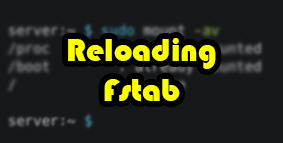How To Use Kenba: Unleashing the Power of Kotlin Development

In this comprehensive guide, we will explore the ins and outs of how to use Kenba. Kenba, a cutting-edge software development framework for Kotlin, offers a seamless experience for building robust applications.
Getting Started with Kenba
Installation Process
To kickstart your journey with Kenba, the first step is to install the Kenba CLI. Head over to the official Kenba website and download the CLI based on your operating system. Follow the step-by-step installation instructions, ensuring a smooth setup process.
Creating Your First Project
With Kenba installed, open your terminal and navigate to the directory where you want your project to reside. Execute the command [dm_code_snippet background=”yes” background-mobile=”yes” slim=”no” line-numbers=”no” bg-color=”#abb8c3″ theme=”dark” language=”shell” wrapped=”no” height=”” copy-text=”Copy Code” copy-confirmed=”Copied”]
kenba new my-project
[/dm_code_snippet] to initiate the creation of a new Kenba project named “my-project.” Move into the project directory using [dm_code_snippet background=”yes” background-mobile=”yes” slim=”no” line-numbers=”no” bg-color=”#000″ theme=”dark” language=”php” wrapped=”no” height=”” copy-text=”Copy Code” copy-confirmed=”Copied”]
cd my-project
[/dm_code_snippet].
Building and Running Your Application
Writing Code in Kotlin
Kenba relies on the power of Kotlin for defining application logic. Open your preferred Integrated Development Environment (IDE) or text editor and start crafting your application code in Kotlin. Each module in your application should have a corresponding Kotlin file.
Compiling and Generating Artifacts
Once your code is ready, initiate the compilation process by running the command [dm_code_snippet background=”yes” background-mobile=”yes” slim=”no” line-numbers=”no” bg-color=”#000″ theme=”dark” language=”php” wrapped=”no” height=”” copy-text=”Copy Code” copy-confirmed=”Copied”]
kenba build
[/dm_code_snippet]. This command not only compiles your Kotlin code but also generates the necessary artifacts required for running your application.
Running Your Application
The method to run your application varies based on its type. For web applications, execute kenba server start to launch a development server and seamlessly open your application in a web browser. Refer to the Kenba documentation for specific instructions on running other types of applications.
Learning More: Resources and Support
Official Documentation
The Kenba documentation serves as a comprehensive resource for mastering the intricacies of the framework. Explore detailed guides, explanations, and examples at Kotlin Official Documentation.
Tutorials and Examples
Accelerate your Kenba learning curve by diving into a collection of tutorials and examples available on the Kenba website at Kenba Tutorials and Examples. These resources cover a wide array of common tasks and scenarios.
Community Support
For additional guidance and support, connect with the vibrant Kenba community on the Kenba forum at Kenba Forum. Engage in discussions, ask questions, and tap into the collective expertise of fellow developers.
Taking a Deeper Dive into Kenba
Optimizing Development Workflow
IDE Optimization
For an enhanced development experience, consider using IntelliJ IDEA Ultimate Edition, which integrates seamlessly with Kenba through built-in plugins.
Project Structure
Understand Kenba’s modular approach, where each module represents a functional unit of your application. Define dependencies and build configurations in [dm_code_snippet background=”yes” background-mobile=”yes” slim=”no” line-numbers=”no” bg-color=”#000″ theme=”dark” language=”php” wrapped=”no” height=”” copy-text=”Copy Code” copy-confirmed=”Copied”]
module.build.kts
[/dm_code_snippet] files.
Building Different Application Types
Web Applications
Leverage Kenba’s prowess in web development. Integrate routing libraries like Ktor, and configure server setups and databases within your modules.
Console Applications
Tailor your approach for command-line applications. Define functions and command-line arguments within modules, utilizing libraries like Apache CLI for advanced features.
Desktop Applications
While not its primary focus, Kenba can also be used for building desktop applications using Kotlin Native and other compatible libraries.
Exploring Advanced Features
Testing
Kenba encourages writing unit and integration tests for your code. Utilize frameworks like JUnit or Kotest to ensure the quality and stability of your applications.
Deployment Strategies
Explore various deployment options based on your application type. Platforms like Heroku or AWS are ideal for web applications, while desktop applications can be packaged into native distributions.
Conclusion
This guide serves as a comprehensive roadmap to master the art of using Kenba for Kotlin development. As you embark on your application-building journey, consult the provided resources to delve deeper into specific features and functionalities.





